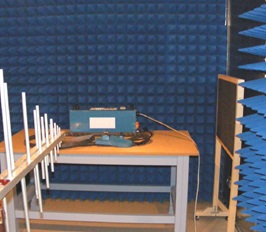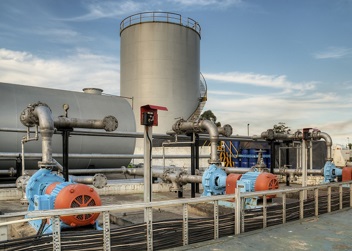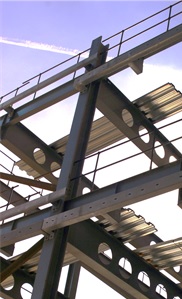The lists of harmonised standards on the European Commission’s website are frequently updated to include new or amended standards. These standards, when they appear on the list (formally known as the Official Journal) can, when applied in full, offer a presumption of conformity to the applicable CE Marking Directive. Usually the application of a harmonised standard can simplify the CE marking process, as the standard will not only try to set out best practice, but it will also remove some of the subjective parts often found within the essential requirements of the Directives.
Things, however, are a little different for construction products. Under the Construction Product Regulation, the manufacturer is only required to CE mark their product if a harmonised standard exists. As such, when the list of construction product harmonised standards is updated, it can have a significant impact on manufacturer’s who make, import or distribute products that fall within scope of these ‘new’ standards. Thankfully the list is not changed too often and was last updated on 28th June 2013, that was until 20th August 2014 when a new list appear in the Official Journal.
In total 22 ‘new’ standards that have entered onto the list, although the vast majority are the latest versions of the standards that have previously featured on the list. There is only just 5 brand new entries, so it might be worth casting your eye over the new additions to make sure one does not affect your products.
If you believe one of the new standards applies to your products, then we would recommend purchasing a copy of the standard and start to prepare for CE marking your product. There is no need to panic, as whilst the new list of harmonised standards has now been published, there is a transitional period which is given in the final two columns (most of which do not become mandatory until 8th August 2015).
The list of the 22 ‘new’ standards can be seen in the table below and full list of harmonised standards for construction products can be seen on the European Commission’s website (http://eur-lex.europa.eu/legal-content/EN/TXT/PDF/?uri=uriserv:OJ.C_.2014.259.01.0001.01.ENG).
If you have any queries or require support with CE Marking, then please contact us on 01527 595066.
The ‘New’ Construction Product Standards:
| Reference and title of the harmonised standard (and reference document) |
Reference of superseded standard |
Date of applicability of the standard as a harmonised standard |
Date of the end of the co-existence period Note 4 |
| EN 845-1:2013 (new) Specification for ancillary components for masonry – Part 1: Wall ties, tension straps, hangers and brackets |
08/08/2014 |
08/08/2015 |
|
| EN 845-2:2013 (new) Specification for ancillary components for masonry – Part 2: Lintels |
08/08/2014 |
08/08/2015 |
|
| EN 845-3:2013 (new) Specification for ancillary components for masonry – Part 3: Bed joint reinforcement of steel meshwork |
08/08/2014 |
08/08/2015 |
|
| EN 1344:2013 (new) Clay pavers – Requirements and test methods |
EN 1344:2002 |
08/08/2014 |
08/08/2015 |
| EN 12566-3:2005+A2:2013 (new) Small wastewater treatment systems for up to 50 PT – Part 3: Packaged and/or site assembled domestic wastewater treatment plants |
31/12/2013 |
||
| EN 12566-7:2013 (new) Small wastewater treatment systems for up to 50 PT – Part 7: Prefabricated tertiary treatment units |
08/08/2014 |
08/08/2015 |
|
| EN 12602:2008+A1:2013 (new) Prefabricated reinforced components of autoclaved aerated concrete |
08/08/2014 |
08/08/2015 |
|
| EN 13225:2013 (new) Precast concrete products – Linear structural elements |
08/08/2014 |
08/08/2015 |
|
| EN 13808:2013 (new) Bitumen and bituminous binders – Framework for specifying cationic bituminous emulsions |
08/08/2014 |
08/08/2015 |
|
| EN 14080:2013 (new) Timber structures – Glued laminated timber and glued solid timber – Requirements |
08/08/2014 |
08/08/2015 |
|
| EN 14342:2013 (new) Wood flooring and parquet – Characteristics, evaluation of conformity and marking |
08/08/2014 |
08/08/2015 |
|
| EN 14509:2013 (new) Self-supporting double skin metal faced insulating panels – Factory made products – Specifications |
EN 14509:2006 |
08/08/2014 |
08/08/2015 |
| EN 14783:2013 (new) Fully supported metal sheet and strip for roofing, external cladding and internal lining – Product specification and requirements |
08/08/2014 |
08/08/2015 |
|
| EN 14915:2013 (new) Solid wood panelling and cladding – Characteristics, evaluation of conformity and marking |
EN 14915:2006 |
08/08/2014 |
08/08/2015 |
| EN 15037-4:2010+A1:2013 (new) Precast concrete products – Beam-and-block floor systems – Part 4: Expanded polystyrene blocks |
08/08/2014 |
08/08/2015 |
|
| EN 15037-5:2013 (new) Precast concrete products – Beam-and-block floor systems – Part 5: Lightweight blocks for simple formwork |
08/08/2014 |
08/08/2015 |
|
| EN 15286:2013 (new) Agglomerated stone – Slabs and tiles for wall finishes (internal and external) |
08/08/2014 |
08/08/2015 |
|
| EN 15322:2013 (new) Bitumen and bituminous binders – Framework for specifying cut-back and fluxed bituminous binders |
08/08/2014 |
08/08/2015 |
|
| EN 15382:2013 (new) Geosynthetic barriers – Characteristics required for use in transportation infrastructure |
08/08/2014 |
08/08/2015 |
|
| EN 15501:2013 (new) Thermal insulation products for building equipment and industrial installations – Factory made expanded perlite (EP) and exfoliated vermiculite (EV) products – Specification |
08/08/2014 |
08/08/2015 |
|
| EN 15682-2:2013 (new) Glass in building – Heat soaked thermally toughened alkaline earth silicate safety glass – Part 2: Evaluation of conformity/Product standard |
08/08/2014 |
08/08/2015 |
|
| EN 15683-2:2013 (new) Glass in building – Thermally toughened soda lime silicate channel shaped safety glass – Part 2: Evaluation of conformity/Product standard |
08/08/2014 |
08/08/2015 |


 The EMC Directive 2004/108/EC is one of a number of CE Marking Directives that are getting a make-over to bring them into line with EU Decision No. 768/2008/EU, in accordance with the New Legislative Framework (NLF) that was introduced in 2008. Subsequently, a NEW recast Electromagnetic Conformity (EMC) 2014/30/EU came into force on the 18th April 2014, however, the current directive (2004/108/EC) will not be repealed until April 20th 2016 and until this 2016 date, manufacturers can continue to place products on the market that comply with the current Directive.
The EMC Directive 2004/108/EC is one of a number of CE Marking Directives that are getting a make-over to bring them into line with EU Decision No. 768/2008/EU, in accordance with the New Legislative Framework (NLF) that was introduced in 2008. Subsequently, a NEW recast Electromagnetic Conformity (EMC) 2014/30/EU came into force on the 18th April 2014, however, the current directive (2004/108/EC) will not be repealed until April 20th 2016 and until this 2016 date, manufacturers can continue to place products on the market that comply with the current Directive. The Pressure Equipment Directive (97/23/EC) is due to be replaced by a brand new Directive that has been aligned to the New Legislative Framework. The arrival of the new Directive (2014/68/EU) will mean that manufacturers will need to review their CE marking procedures and documentation for pressure equipment. The Directive will be implemented into force in two stages;
The Pressure Equipment Directive (97/23/EC) is due to be replaced by a brand new Directive that has been aligned to the New Legislative Framework. The arrival of the new Directive (2014/68/EU) will mean that manufacturers will need to review their CE marking procedures and documentation for pressure equipment. The Directive will be implemented into force in two stages; As of the 1st July 2014, structural steel and aluminium components are required to be CE marked under the Construction Products Regulation (CPR).
As of the 1st July 2014, structural steel and aluminium components are required to be CE marked under the Construction Products Regulation (CPR).







